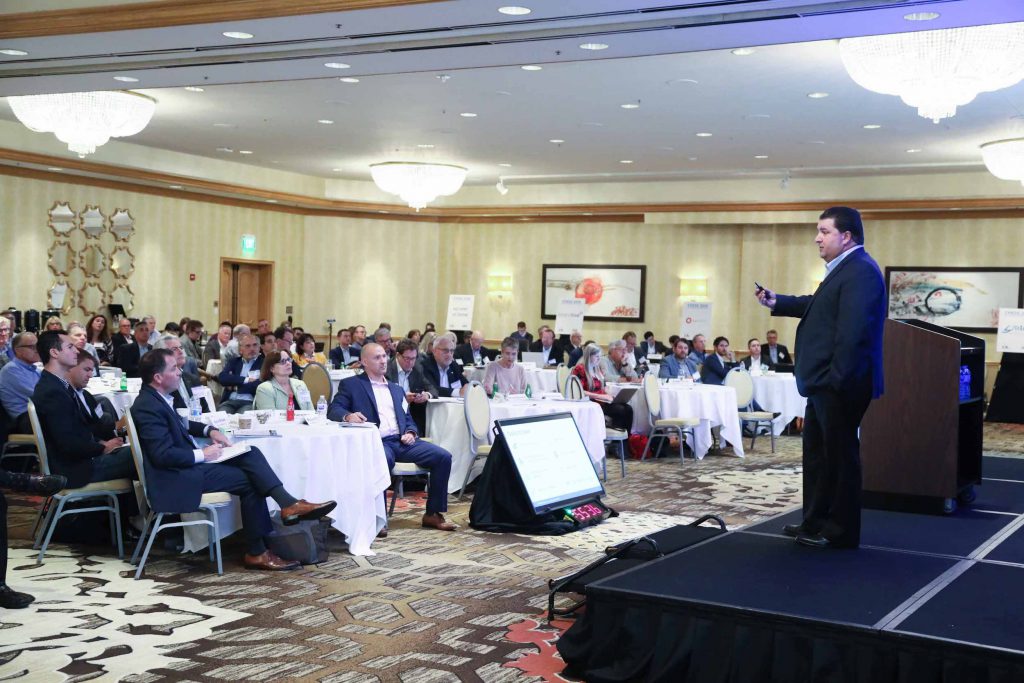Don Unser
The NPD Group, Inc.
Trends Shaping the Future of the U.S. Retail Landscape
Don Unser prefaced his remarks by noting that he would present a trend outline with supporting data for the U.S. retail market, while at the same time some of these same concepts are playing out in other regions of the world.
U.S. Economic Conditions and Industry Trends
Unser summarized the current economy and noted that with high employment, there is some concern for inflation. NPD studied industry trends across $1.8 trillion of U.S. consumer spending. Retail growth is rebounding after a weak 2017 first half and is now growing to approach 3% for U.S. retail.
Consumers are shifting spending from objects to experiences. They want to create memories and take pictures with their phones and share online. Domestic travel increased almost 2% in 2017 and passengers on foreign airlines serving the U.S. grew more than 3% in 2017 over the previous year. Food service expenses comprised about 25% of travel spend. Hotels, B&B, vacation homes, campgrounds and recreational vehicles benefitted. In 2017, 500,000 RVs were delivered to dealers. The growth in RV sales was due to millennials, not Boomers, choosing to drive to unique places (and share experiences on social media). Most RVs now include amenities like WiFi to appeal to younger consumers.
Committed Consumption
Consumers have less discretionary income available now than in the past; income is tied up in additional resources beyond traditional monthly expenses for housing, utilities and loan payments. Subscription services, streaming, and memberships chip away at the money consumers have left to spend at retail. While subscriptions can lure consumers to sign up, they often cancel quickly; meal kit subscriptions have the highest cancellation rate. Amazon Prime and Costco memberships proved the value of membership programs for frequent spends and higher dollar baskets. Consider how your products fit into a membership relationship rather than single discrete transactions.
Higher food prices mean customers are paying more at restaurants, but store count is dropping and deliveries are affecting all businesses. NPD sees that 49% of meals bought at restaurants are consumed elsewhere and forecasts that carry outs will go over 50% this year.

Retail spending
For the 12 months ending in June 2018, Unser presented 19 categories tracked by NPD, totaling $1.94 trillion in spending and has grown steadily since June 2017. Housewares represented $9.4 billion, up 3.4% of this total.
The total online market, in categories tracked by NPD, grew nearly 12% during the same time period, with the greatest increases in prestige beauty, commercial food services, video games, office supplies, small appliances, footwear and consumer electronics.
E-commerce
Worldwide e-commerce sales continue to rise and are expected to triple by 2021. Although only 6% of U.S. consumers have gone totally online, four in ten customers still spend 90% of their purchases in store. Amazon and Walmart claim the largest share of online shopping; Target and Kohl’s have strong omni-channel strategies to hold their shares. Best Buy increased its share of online purchases, possibly because electronics is a top category for online shoppers. Shoppers consistently buy higher priced products online than in store.
Amazon expedited shipping is now available to at least 64% of the U.S. population, with Prime Now, one-day or same day delivery. The U.S. Postal Service has outpaced UPS and FedEx in the battle for the last mile. Retailers differ in their opinions for what should qualify for free shipping. Unser listed major retail brands and their required order value from $0 to $100. In the smart device categories, Amazon’s Echo and dot products accelerate the sales of the Alexa voice-automated assistant. Asking for general information is Alexa’s greatest use, and making purchases is now its smallest use, but shopping will be an ever-more important feature as amazon continues to expand. Anything that makes life easier will win.
Issues with Platforms and Third Parties
Brands are taking back control of their presence on platforms because of
- Counterfeit items or unauthorized sellers
- Shipping, supply chain and logistical stipulations
- Pricing transparency and control
- Pressures on international selling and shipping

Distribution Strategies Critical
As retailers reduce footprint, brands are forced to find new channels of distribution. Unser commented that if companies are still using the same distribution channels as they did five years ago, they are losing share. Social media changes demand and brands must respond accordingly.
Distribution strategies are now critical for a brand’s success and existence. Brands need to decide their wholesale, direct to consumer and platform strategies, especially with the rapid growth of private label over national brands. Most dramatically, the retail lifecycle reveals as segments reach maturity and consolidate, they decline rapidly. Specialty stores are struggling. The U.S. lost the single most important toy store and all the products once sold there moved online. The sharing economy has also impacted many categories, look to Uber and Airbnb. Both renting and consignment have become popular among younger consumers who are looking to cut down on ownership.The re-commerce business has been most successful in apparel, footwear, and accessories.
Unser summarized NPD’s look at Best in Class retailers on metrics such as in-store experience, brand innovation, online, loyalty, storytelling, technology and service, followed by retail performance comparable sales.
Recommendations
- Brands need to match distribution to where consumers are. Experiment in every channel
- Have an overall marketplace platform strategy
- With Retailer Owned brands, work with the retailer to differentiate your products
- Stores are not dead, win that traffic
- Innovate. Innovate.
- For brands, innovation in distribution is as important as product innovation
- For retailers, a compelling value proposition competes against platforms
Unser took questions from the floor related to consumer concerns about privacy with voice-activated devices, how online retailers are opening physical stores, and current activity of specific retail brands.



